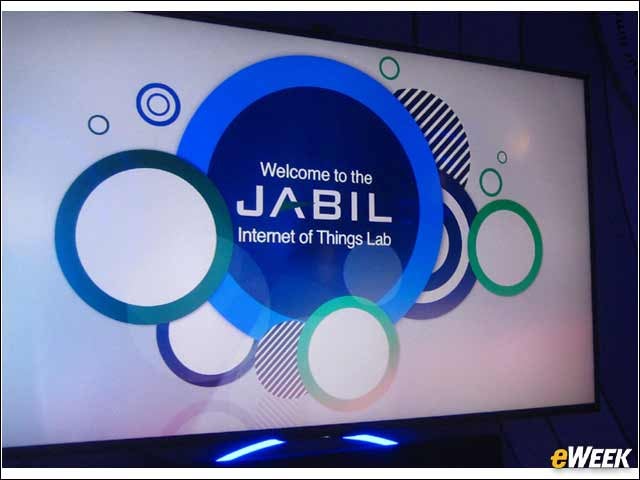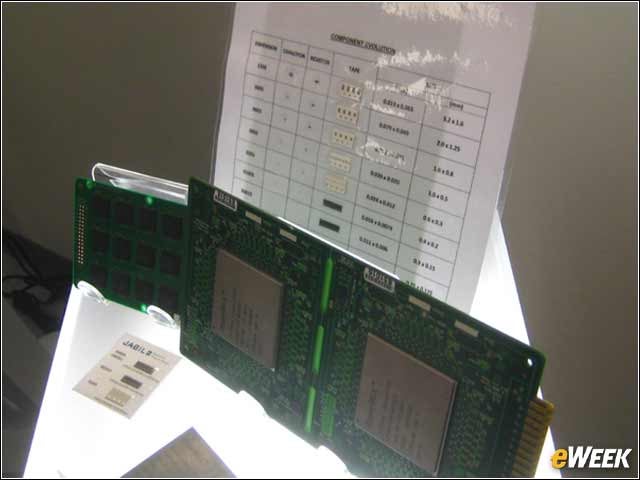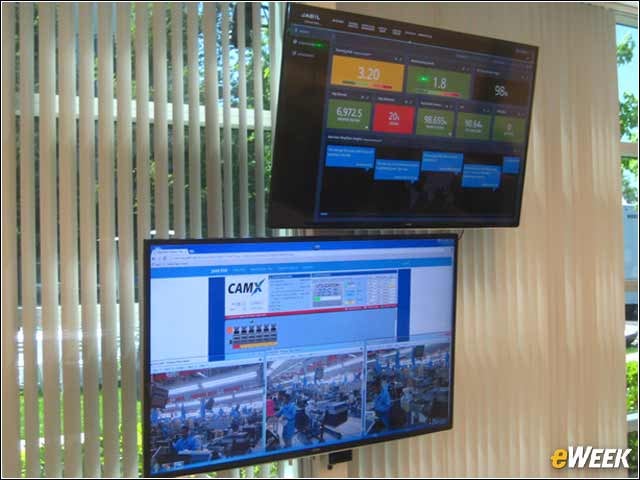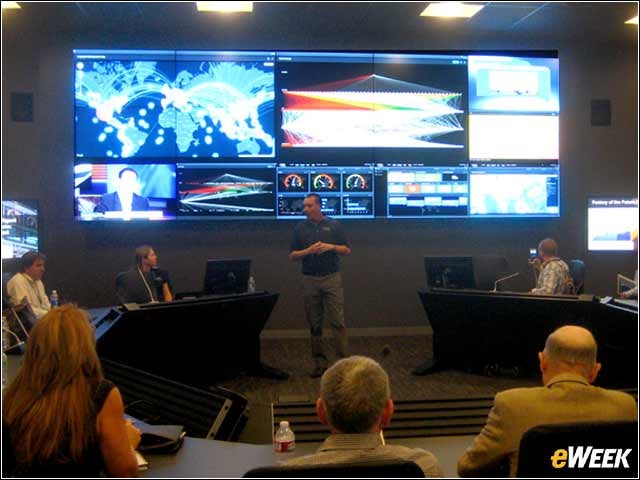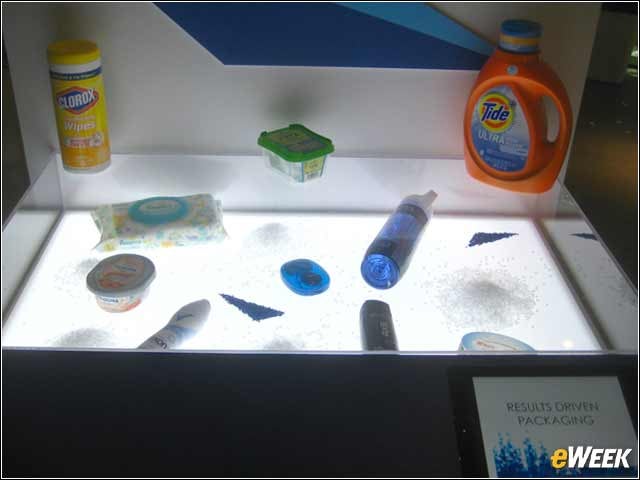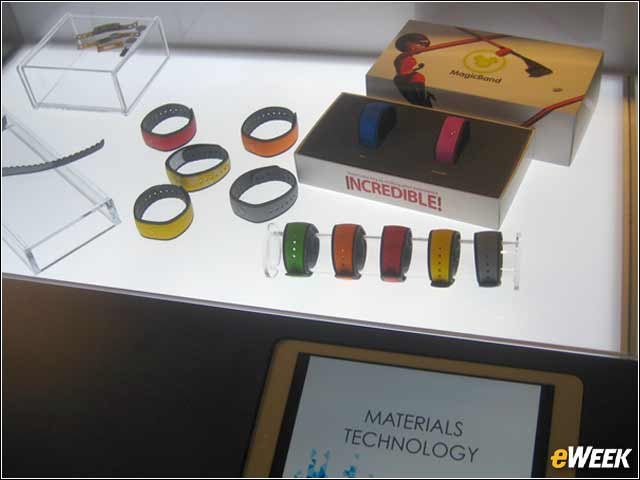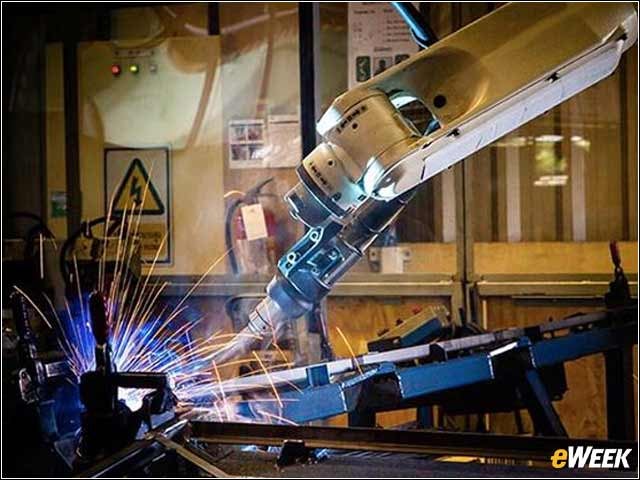eWEEK content and product recommendations are editorially independent. We may make money when you click on links to our partners. Learn More.
2Connected Basketball Partially Developed at Jabil’s IoT Lab
Jabil’s IoT lab at the Blue Sky Center is helping to develop new wearable, health care and sports devices, among other things. One of the most interesting of these is the Wilson 94Fifty basketball, which was introduced in 2013 and costs $295. Jabil was responsible for managing the supply chain, procurement, molding o fplastic components, electronics testing and final module assembly for Athos, the ball manufacturer. The basketball, loaded with sensors, tracks the time a player takes between catching the ball and shooting, the force used to dribble the ball and the arc of each shot. The ability to analyze data makes sports easier to master and enjoy.
3Clean Room
Jabil is one of the largest and most successful design, supply chain and manufacturing companies based in the U.S. An impressive roster of established market leaders and emerging innovators are using Jabil’s diversified services to optimize product development life cycles. A number of them are having circuit boards and other dust-sensitive products built here in the Blue Sky Center clean room.
4Microscopic Assembly Using Robots
To build a custom circuit board like the one shown in the foreground, Jabil often has to solder chips and other parts that are microscopic onto the boards. On the white component sheet shown here, processors on the two columns on the left are displayed from large to micro-small. They become so small that they cannot be seen by the human eye. Jabil has a whole production group that has this capability.
5Baxter, the Teachable Robot
The two-armed Baxter, designed by Rethink Robotics of Boston, is among the key tools used by Jabil for automation. It is designed to work side-by-side with human employees. The $22,000 robot sports animated eyes and sensors that can tell when a person is nearby, so it will turn its head to look. Cameras on the wrists determine how to grab a part. By taking its arms and showing it what to do, workers can teach the robot to do repetitive tasks that humans used to do. Rodon Group is one of the first industrial users of Baxter, training it to stack sections of Super Mario racetracks from its sister company, K’Nex.
6Monitoring Every Section of a Data Center
Jabil worked with the Open Compute Project to create a data center monitoring system using sensors that connect data center operations to the operating system and workloads. The system works across traditional IT equipment as well as Open Compute-compliant designs. The platform also provides an open interface that applications and operating systems can query to make real-time decisions about scale, efficiency and power consumption.
73D Printing
8IT War Room
Jabil uses large monitors like these in its Supply Chain Command Center to plug into various IT systems and display images to enterprise leaders, much like the way the Pentagon and White House run their famous war rooms. They aggregate real-time global activity across worldwide supply chains. Various geographic maps, data center controls and, in fact, a company’s entire value chain can be represented in real time in these graphics.
9Recognize These?
10MyMagic+ Disney World Connected MagicBands
One of the slicker new items produced by Jabil are these wristbands now being issued at Disney World. They are used to keep all records connected with ticketing, parking, food, rides and other special attractions, like concerts. MyMagic+ helps people navigate the daunting task of theme park visits, beginning when users book a hotel and tickets through Disney. Everything is recorded as you plan every detail of your trip. MagicBands keep track of everything and send notifications to your cell phone about where to go next.
11Precision Assembly
Jabil is known worldwide for its automated precision assembly facility. Jabil’s automation expertise includes the deployment of configurable assembly modules that accommodate multiple robots and processes, full automation of entire assembly lines for high-volume manufacturing and precision assembly, which allows for precise location and placement of complex and nonstandard components to support miniaturization while maintaining quality.
